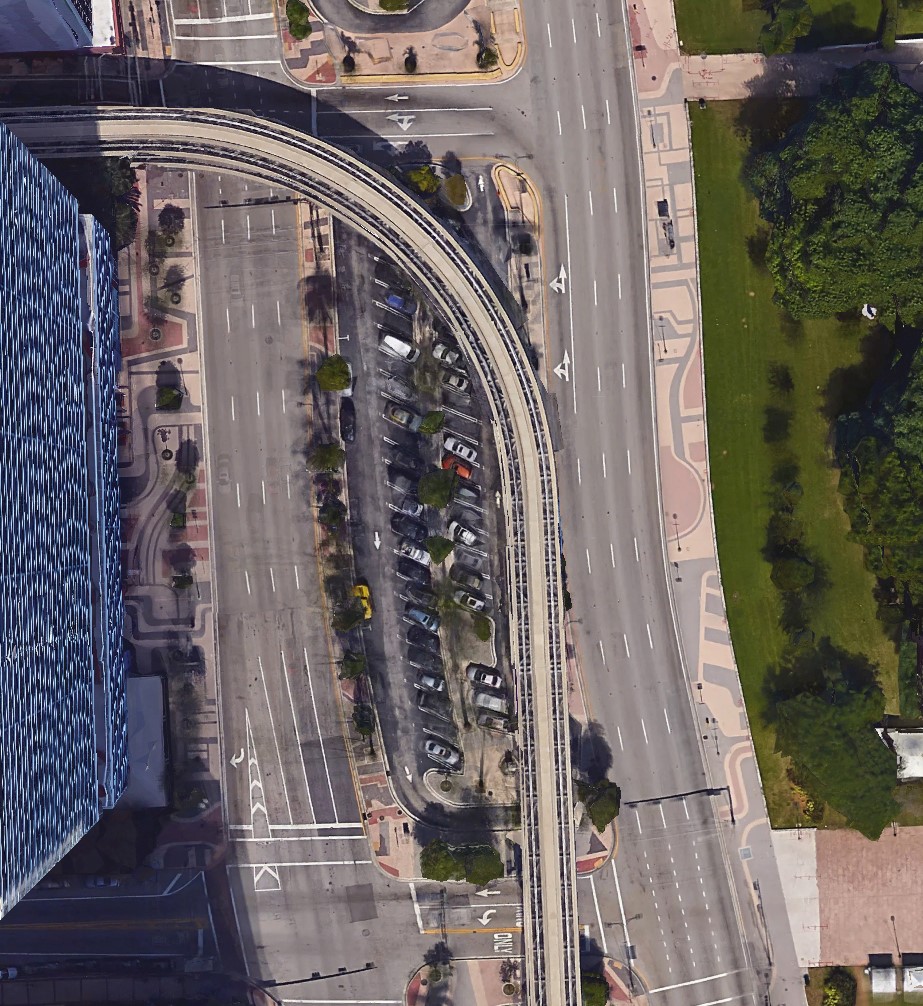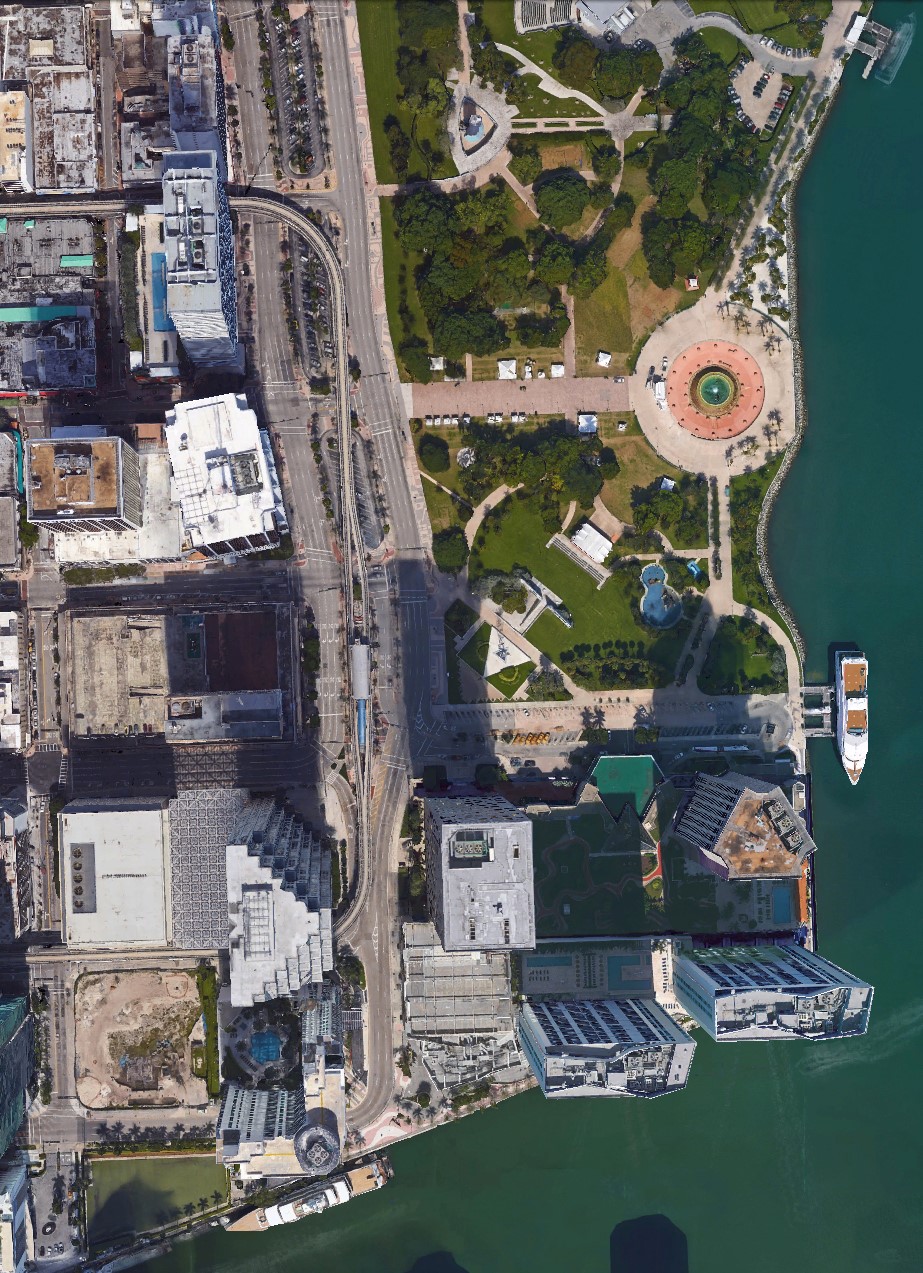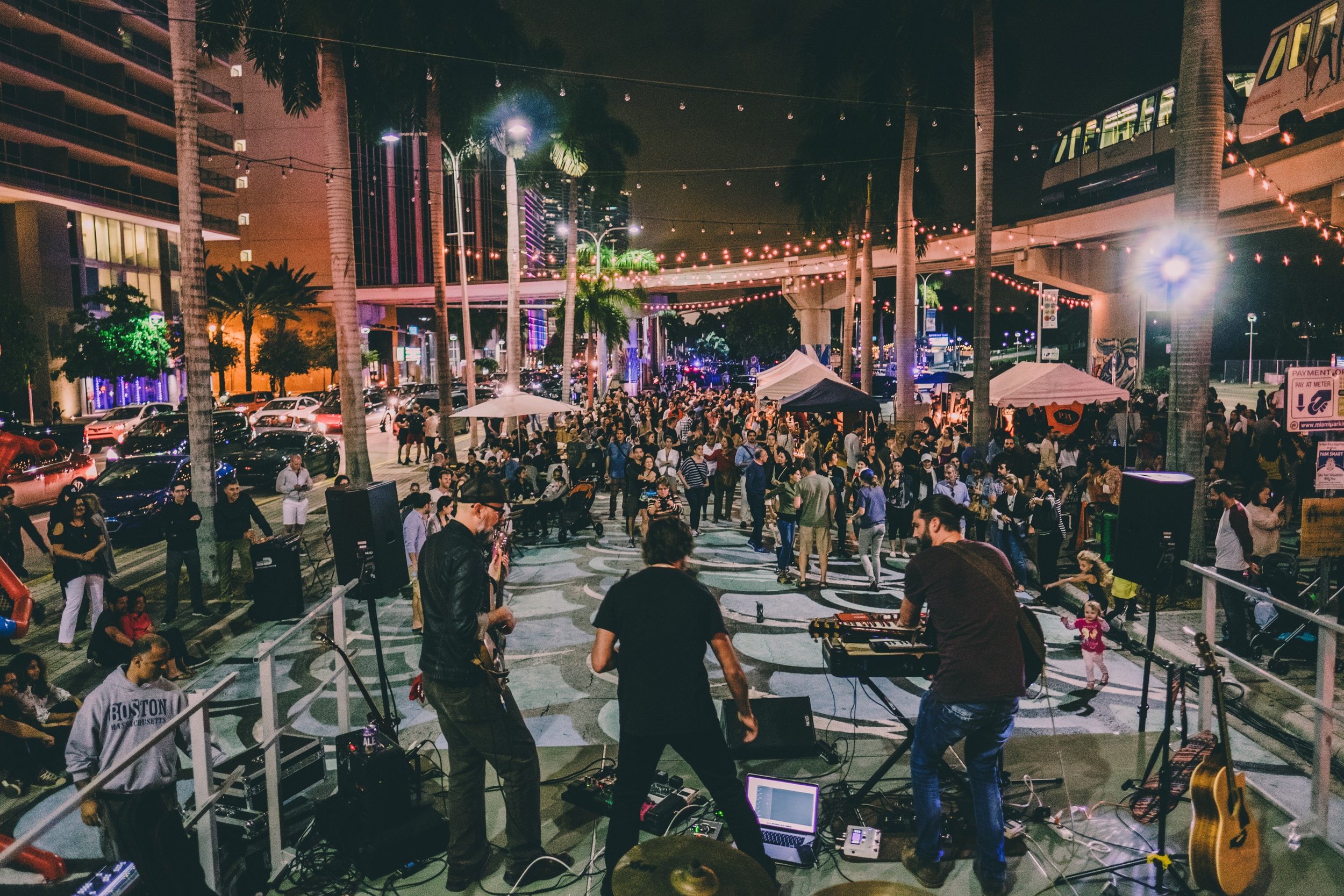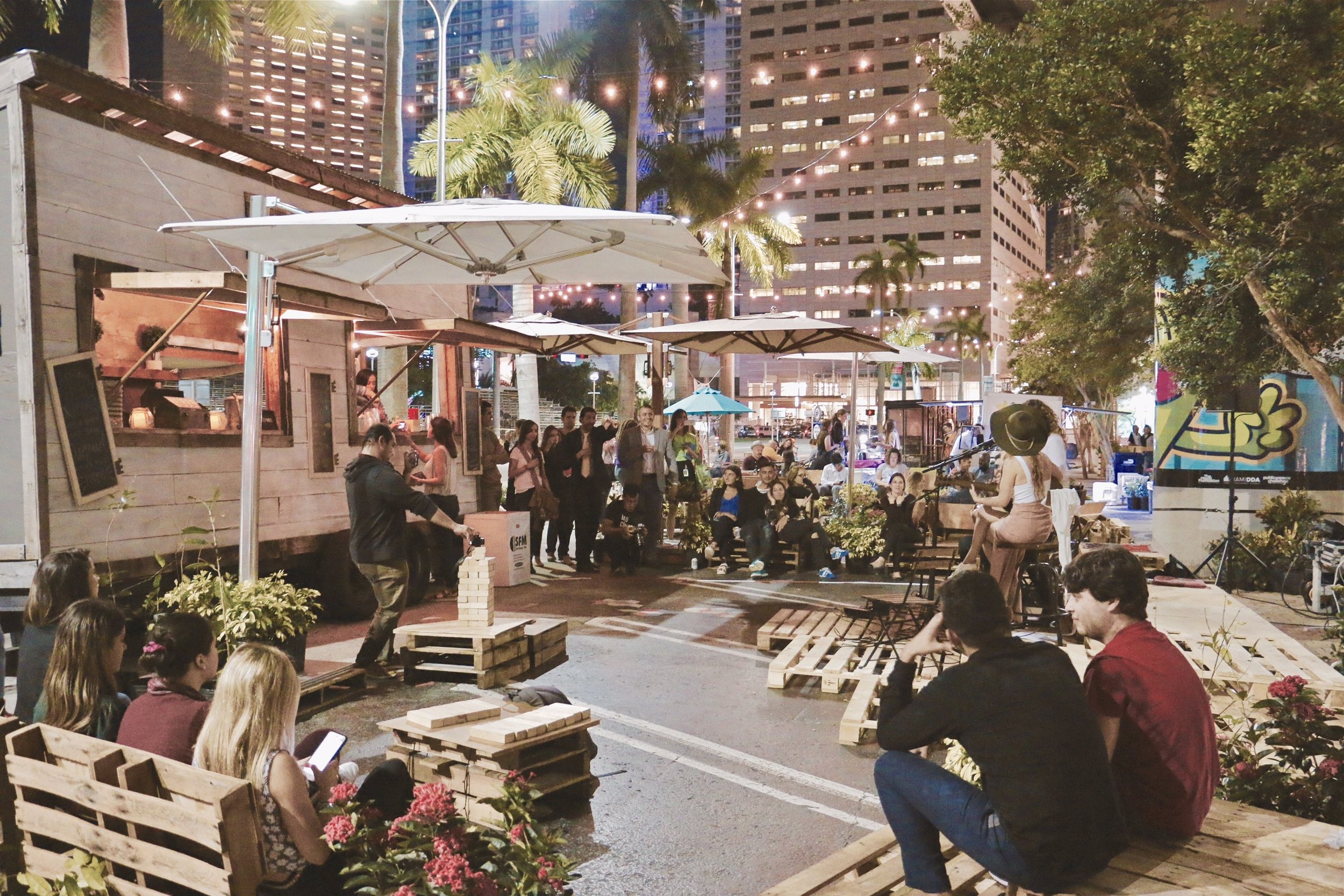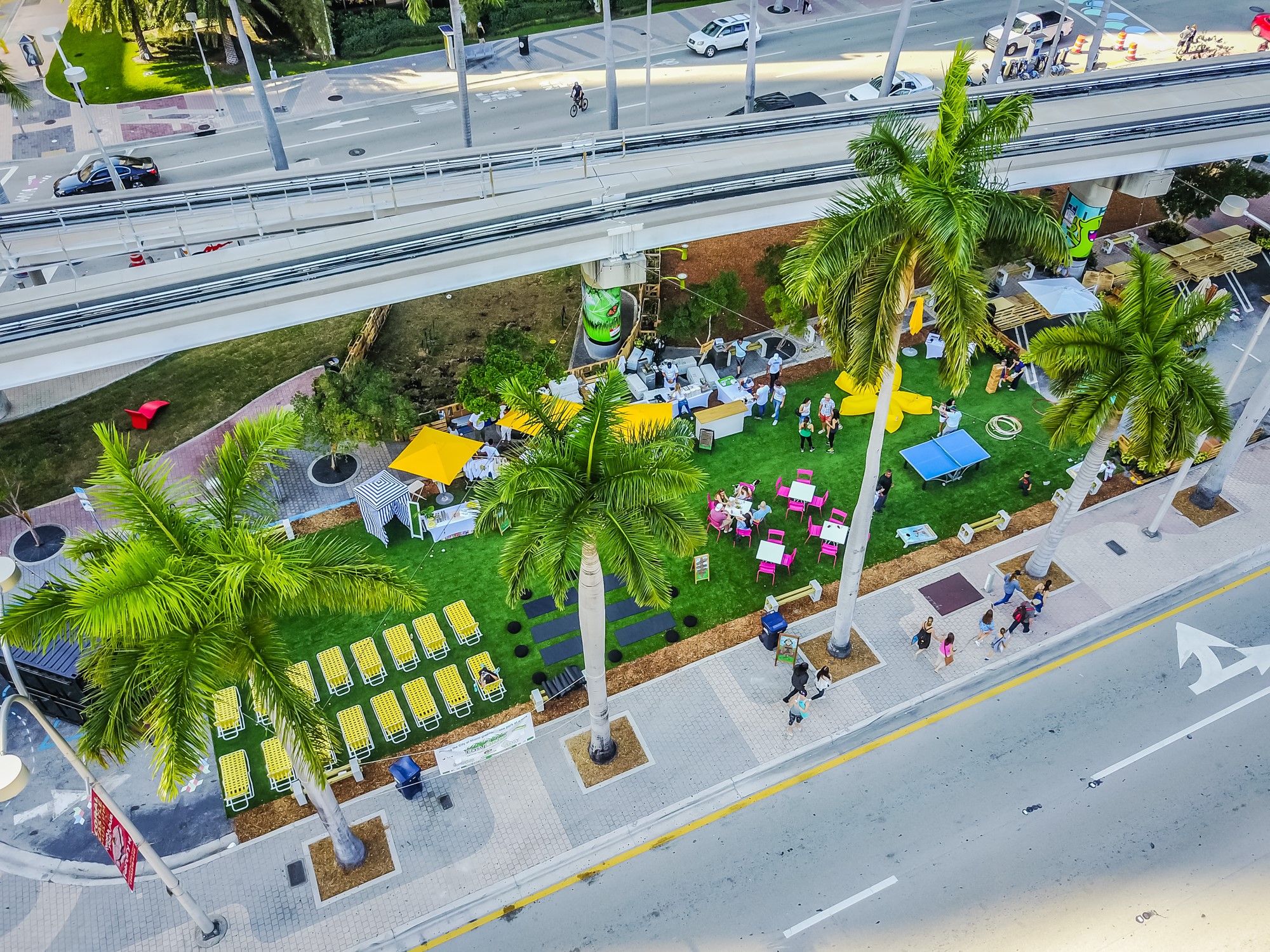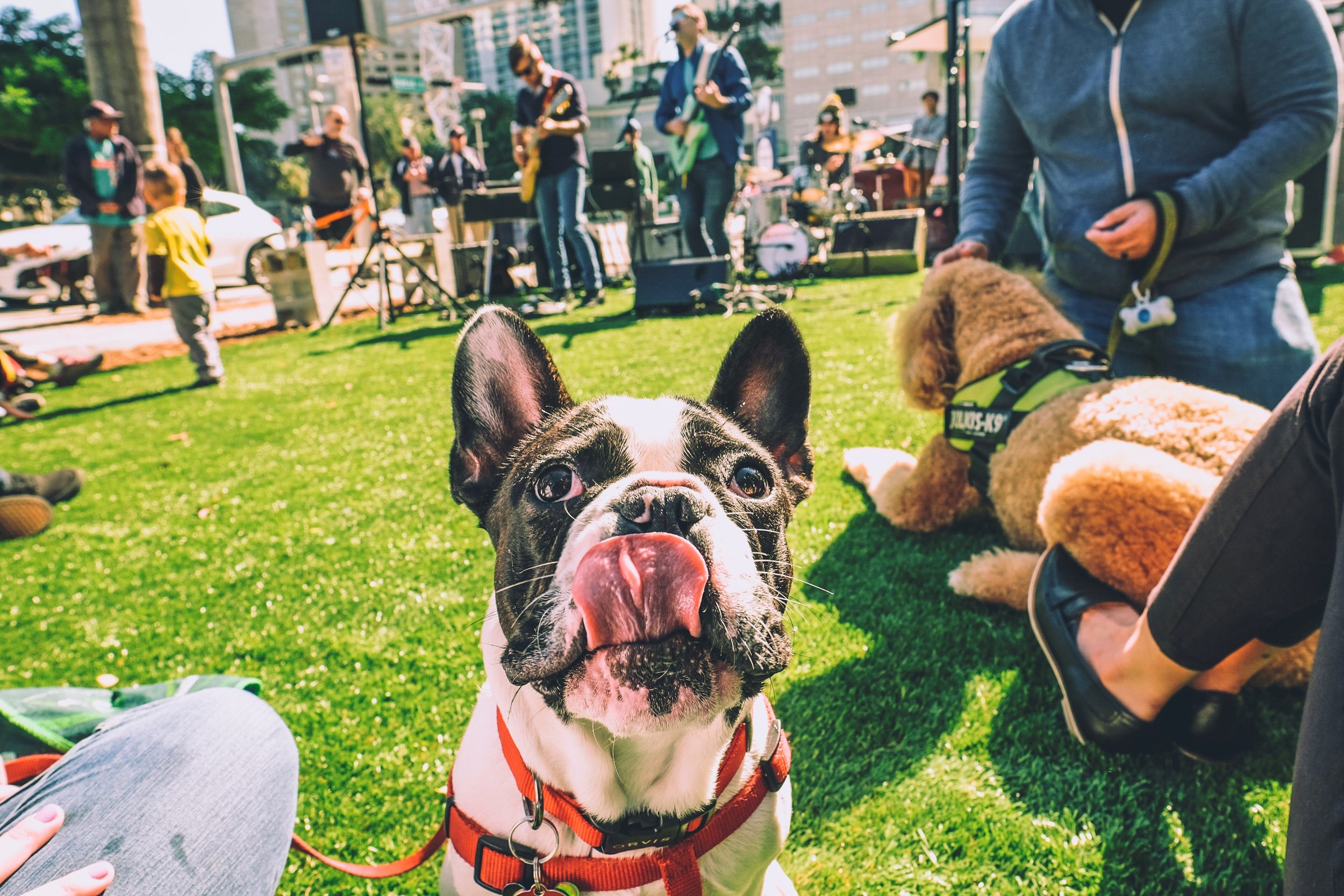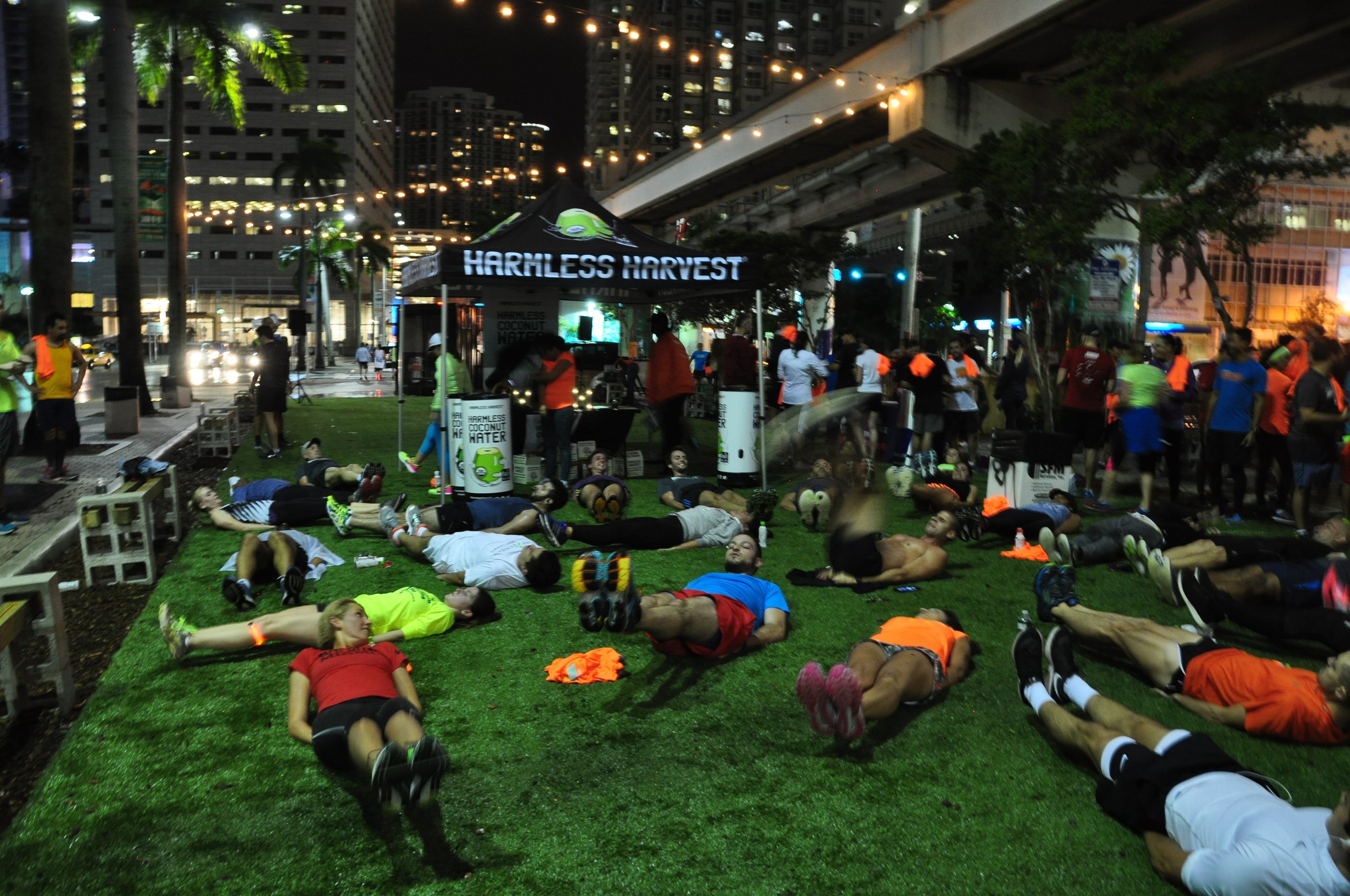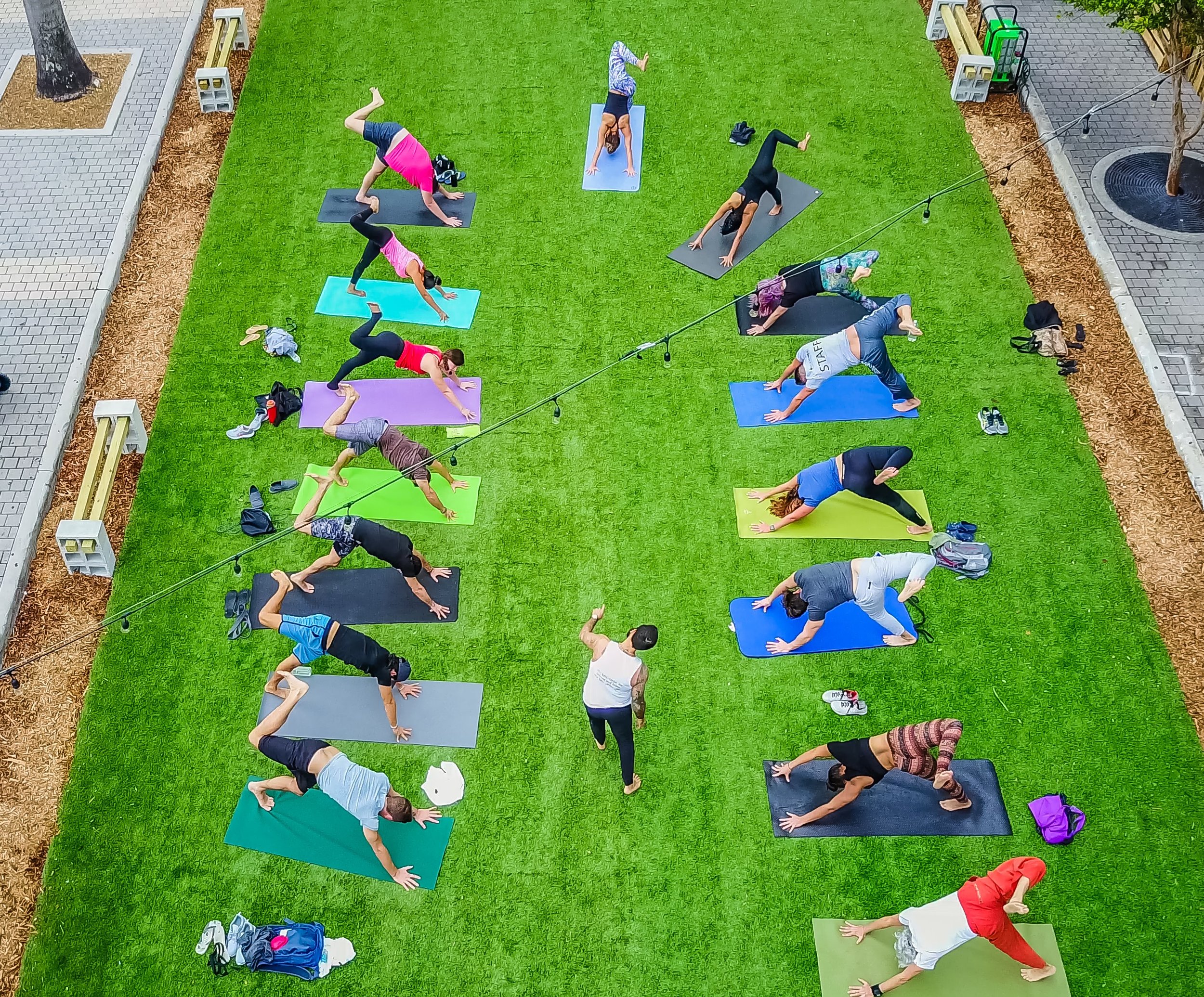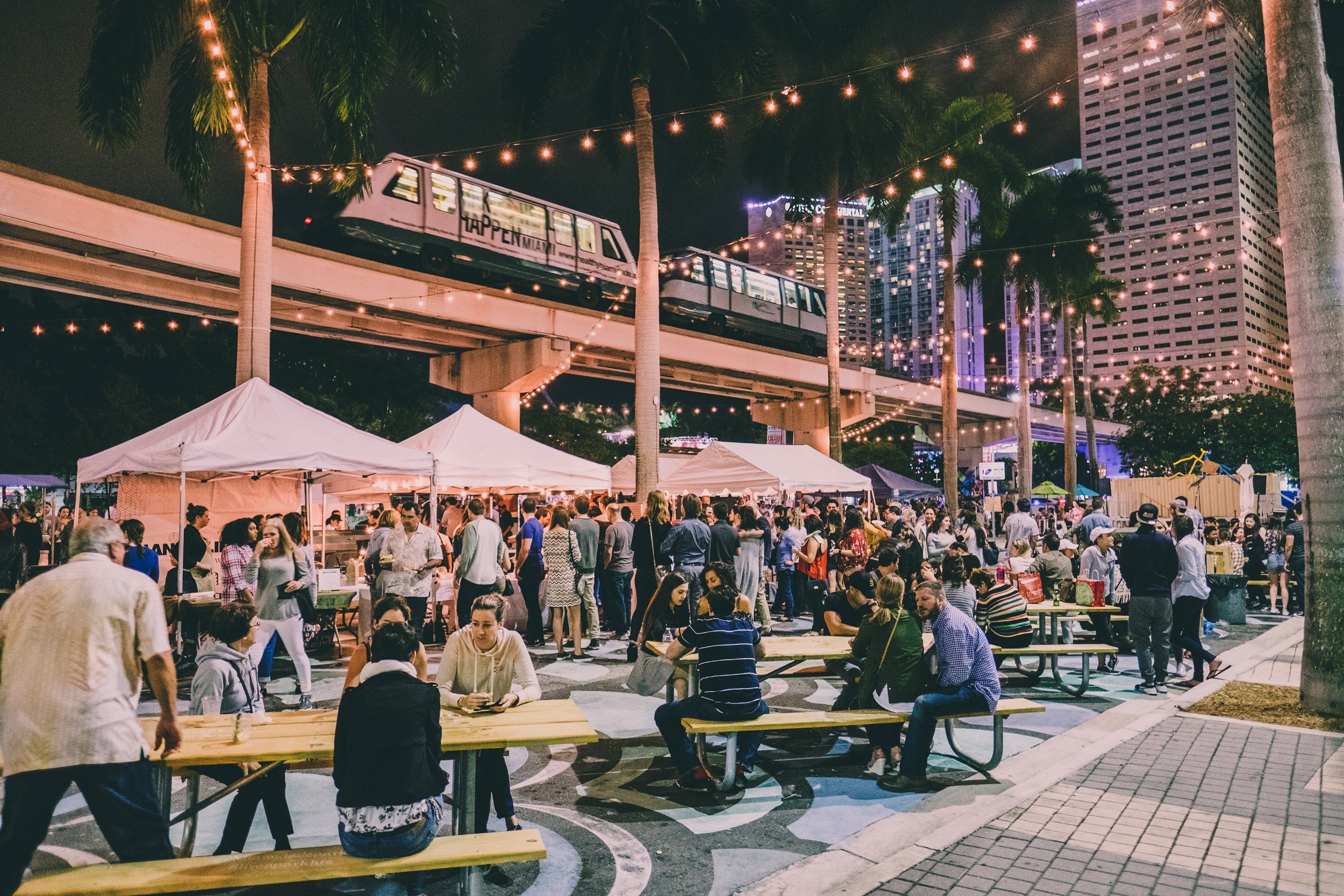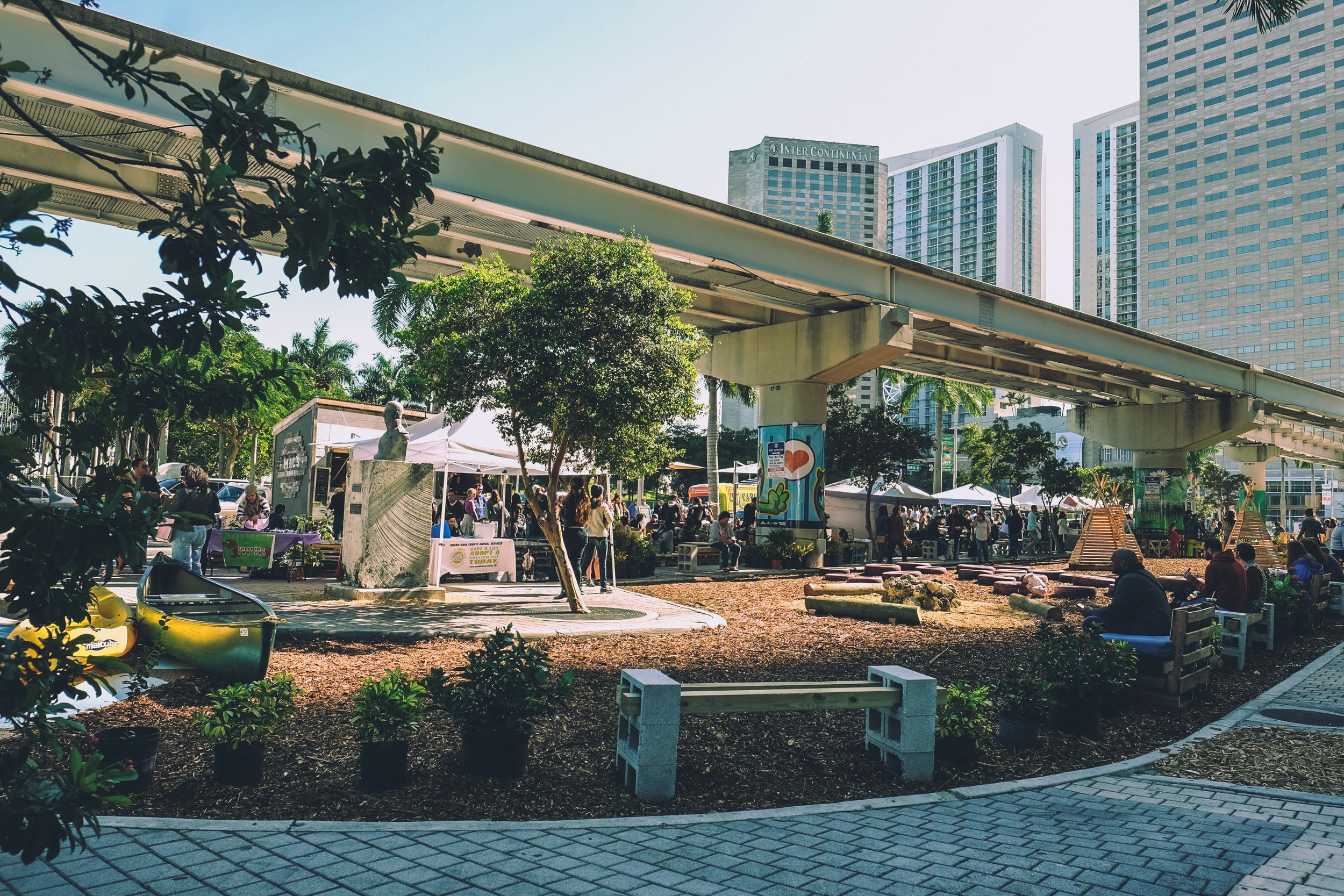Today, for Turnback Tuesday, we are remembering the incredible opportunity we had taking on the project of Biscayne Green in 2016 (implemented in January 2017), where we were able to help bring the community of Downtown Miami together for an activity-filled 3 weeks. Thank you Miami Downtown Development Authority for allowing us this opportunity, we are happy we were able to bring your vision to life.
What is a pop-up park?
From eyesore to vibrant. When the term ‘pop-up’ comes to mind, what do you picture? Do you picture ads that you want to block from your computer? Well, if you’ve lived in a city or are familiar with urban design, then your image of a pop-up is different, and shall we say correct in this case. Pop-up parks have been around for quite some time. However, in the most recent decade they have become extremely popular. Pop-up parks usually are found within urban areas and are temporary parks that are established to create a sense of activity, social interaction and community engagement.
Cities have been jumping on the pop-up park trend for a number of reasons. Pop-up parks can generally be done on a tight budget and create beautiful green spaces in cramped urban areas, turning eyesores to beauty and unengaged neighborhoods into vibrant communities. Plus, pop-up parks often occupy the place of dull parking spots or underutilized public spaces and turn them into innovative settings of all shapes and sizes, encouraging people to leave their cars at home.
“Imagining What Could Be”
While the idea is sometimes met with some initial hesitation from community members who are concerned about reduced parking and other temporary consequences, most business owners and residents alike soon realize that these temporary neighborhood focal points add value not only by drawing in foot traffic and revitalizing shopping districts, but also by injecting a sense of community and “imagining what could be,” as ceosforcities.org puts it (website of CEOs for Cities – a group of city leaders, planners, entrepreneurs and other stakeholders from around the country that work toward creating regional economic growth and opportunity). https://ceosforcities.org/the-lasting-benefits-of-pop-up-parks/
Biscayne Green, the Vision
In Miami, the Downtown Development Authority (MDDA) acquired a grant to test this concept, and assembled a team that included David Font Design, along with other entities, to create a pop-up park taking the place of 101 parking spaces on Biscayne Boulevard under the Metrorail. Although this was a challenge with the given time frame and limited budget, the result was a value-engineered version of the initial concept – as it often is – and it was implemented with great success. Check out the process pictures below.
Photo Credit Biscayne Green
Biscayne Green Completed
For 3 weeks in 2017, Biscayne Green was transformed into new public spaces. During these three weeks, the MDDA created a calendar filled with activities. The first part of Biscayne Green included a turf open lawn, a dog park, playground, and seating areas. Another area included painted asphalt and hanging lights, which was primarily used for vendors, music, yoga, and dance. The design of this pop-up park was integral, yet what made it successful was how each space was designed for a specific but flexible purpose — whether it could serve as a dog park or a yoga/dancing area. These spaces cohesively integrated with each other, leading to the project’s success. Over the course of the 3 weeks, Biscayne Green was visited by over 17,000 people who participated in the events, and who brought their families and pets to enjoy the project’s energetic environment. See below for pictures of Biscayne Green after completion.
Photo Credit Biscayne Green
If you’d like to find out more about Biscayne Green, check out https://www.biscaynegreenmiami.com/.
Some resources for Pop-ups shared by CEOs for Cities:
This site offers guidance on how to get permits for hosting a pop-up park. It also sells building materials for pop-up friendly landscapes. http://www.bisonip.com/wp-content/uploads/2014/05/PopUpParksGuide-2013.pdf
The Cleveland Urban Design Collaborative published a report on their 2012 “Pop Up Rockwell” event http://www.cudc.kent.edu/pop_up_city/rockwell/img/Pop_Up_Rockwell_Report.pdf
The Better Block Foundation has a great guide on revitalizing neighborhoods as a community http://betterblock.org/how-to-build-a-better-block/


